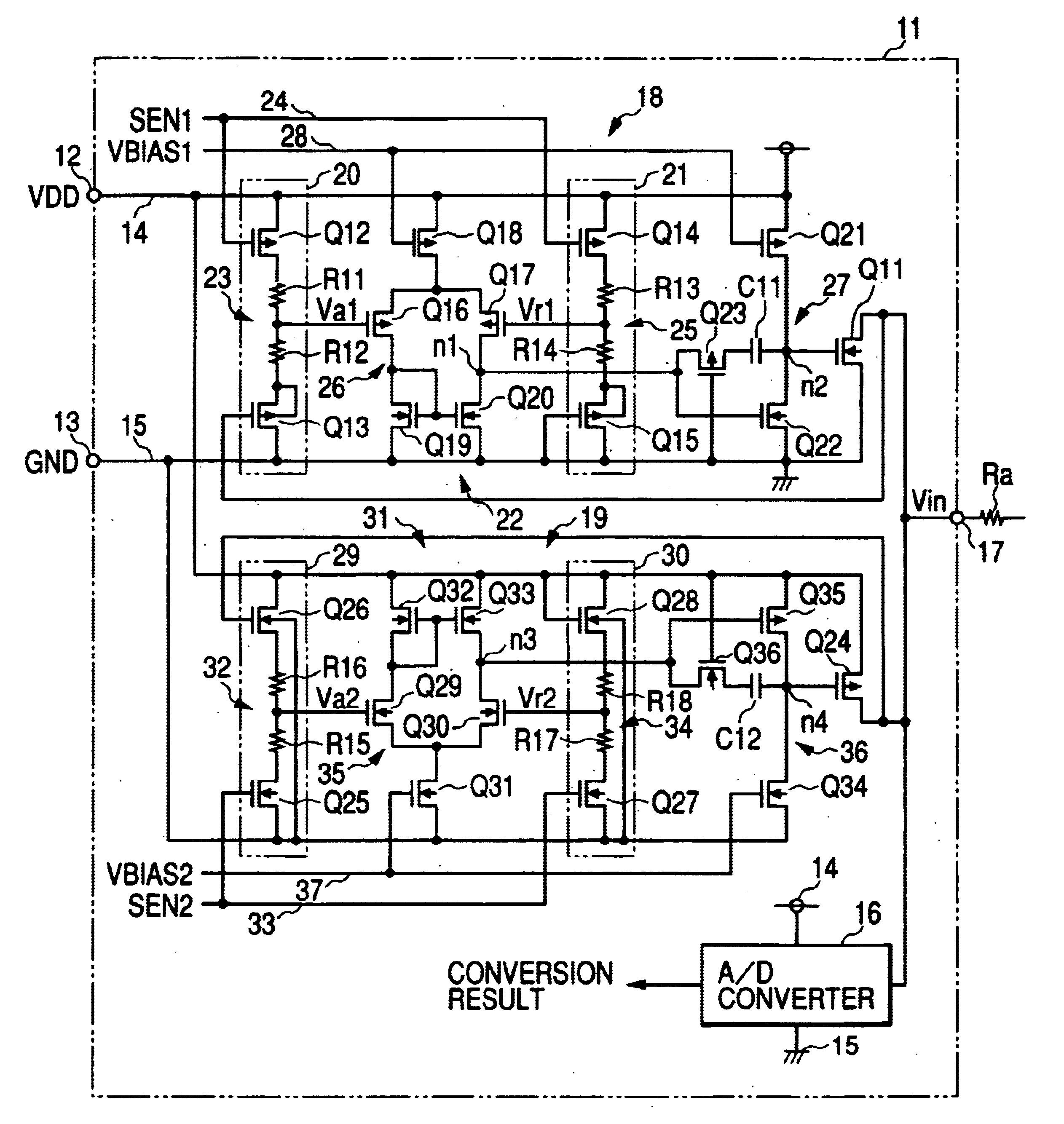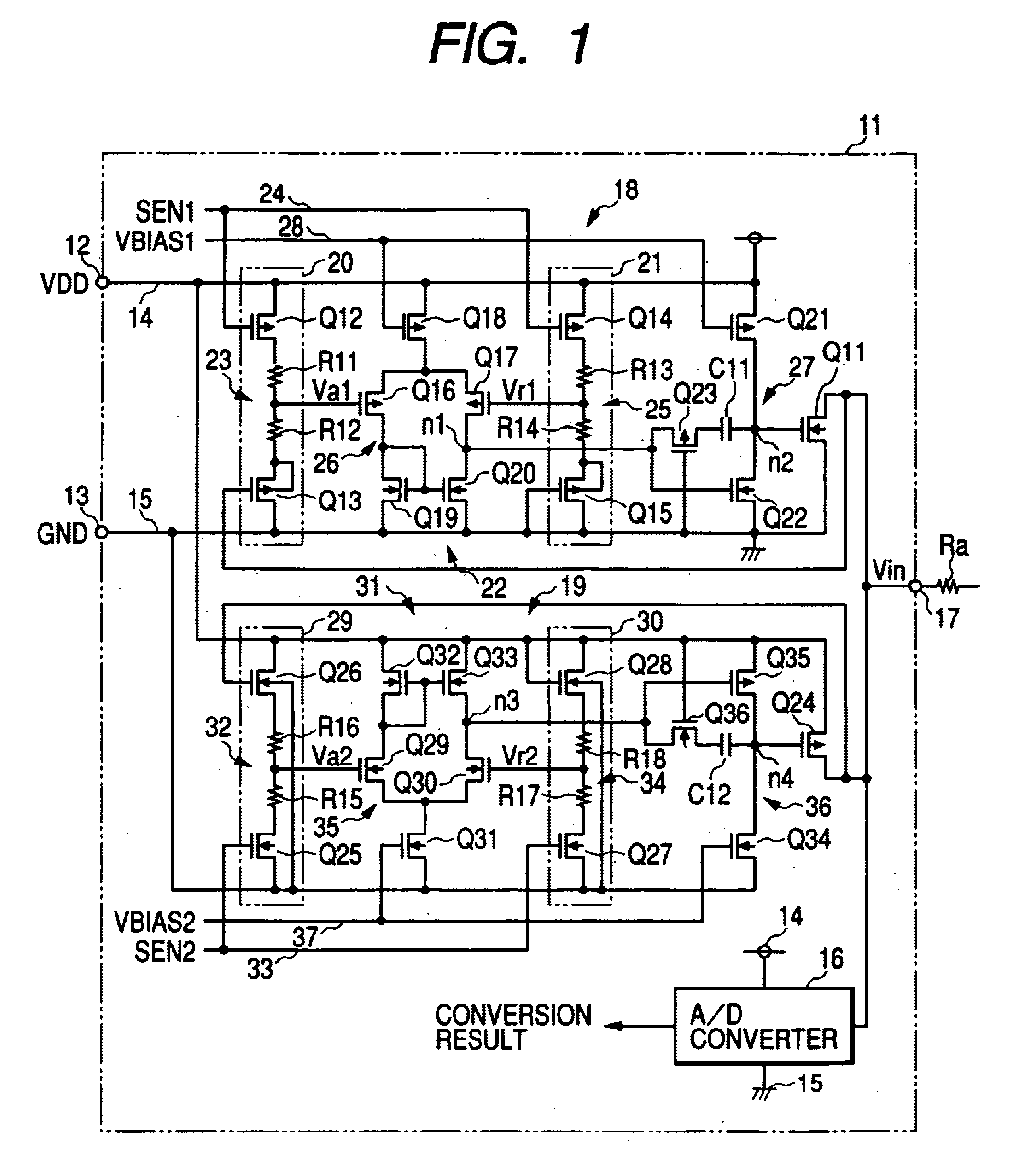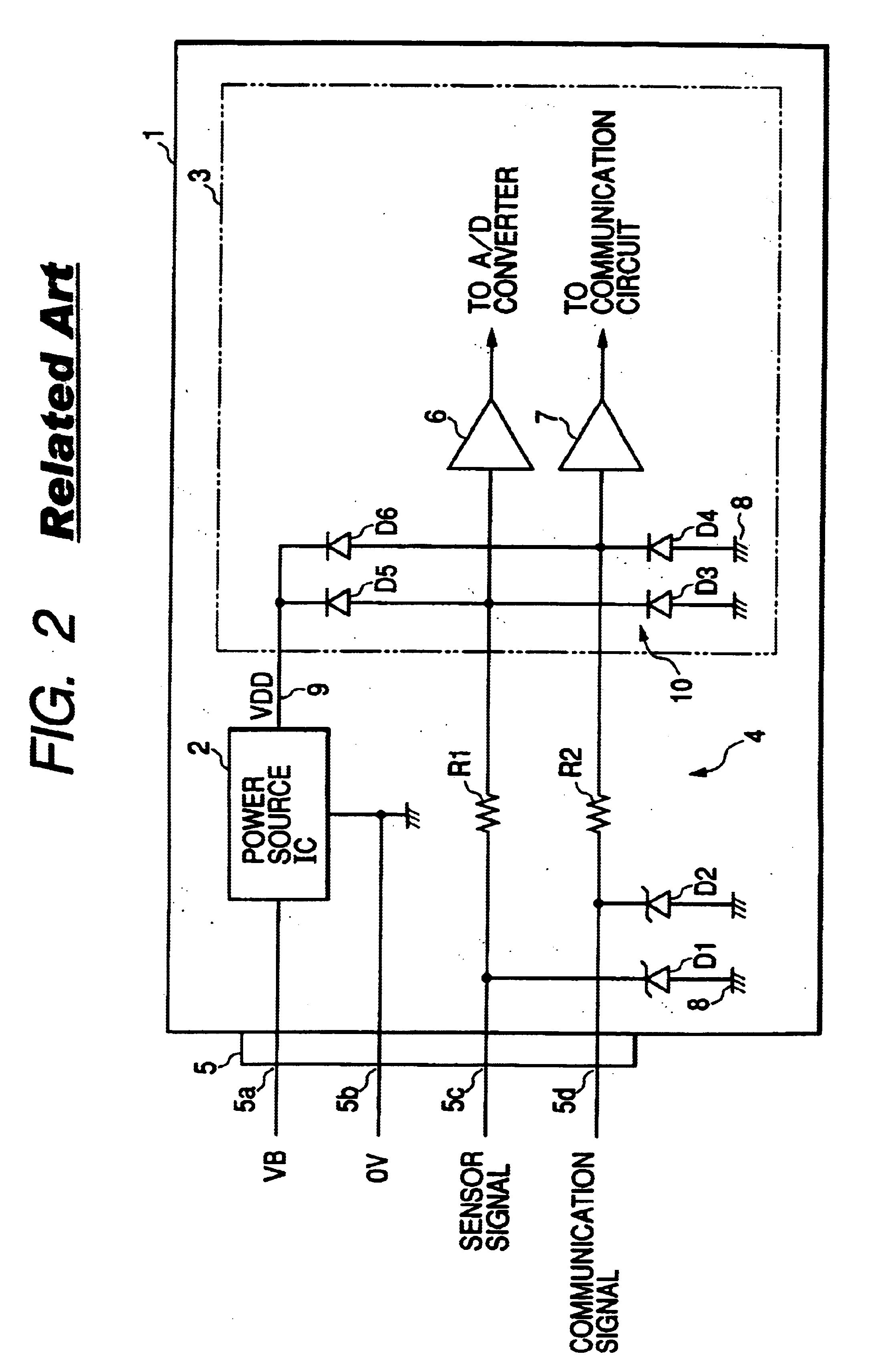Clamp circuit
a technology of clamping circuit and clamping plate, which is applied in the direction of pulse manipulation, pulse technique, instruments, etc., can solve the problems of lowering the response speed, raising the production cost of the clamping circuit, and the inability to employ the low withstand voltage device process,
- Summary
- Abstract
- Description
- Claims
- Application Information
AI Technical Summary
Benefits of technology
Problems solved by technology
Method used
Image
Examples
Embodiment Construction
A preferred embodiment in accordance with the present invention are disclosed in detail, referring to FIG. 1 which shows a semiconductor IC for preventing a positive and negative overvoltage which might be caused by the voltages inputted into a semiconductor IC 11 mounted on a not-shown control substrate in an electronic control unit (ECU).
There is also mounted on the not-shown control substrate a not-shown power supply IC which allows the IC 11 to operate under V.sub.DD supplied through supply terminals 12 and 13 from the not-shown supply IC. Here an accuracy of V.sub.DD is, e.g., 5 V.+-.5%. The supply terminals 12 and 13 are connected inside the IC 11 with a higher voltage supply line 14 and lower voltage supply line 15, respectively.
Although the IC 11 manufactured by the CMOS process includes not-shown various analog and digital circuits, only an A / D converter 16 is shown in FIG. 1. The higher voltage is e.g., 5.5 V and the lower voltage is e.g., minus 0.5 V, taking the product l...
PUM
 Login to View More
Login to View More Abstract
Description
Claims
Application Information
 Login to View More
Login to View More - R&D
- Intellectual Property
- Life Sciences
- Materials
- Tech Scout
- Unparalleled Data Quality
- Higher Quality Content
- 60% Fewer Hallucinations
Browse by: Latest US Patents, China's latest patents, Technical Efficacy Thesaurus, Application Domain, Technology Topic, Popular Technical Reports.
© 2025 PatSnap. All rights reserved.Legal|Privacy policy|Modern Slavery Act Transparency Statement|Sitemap|About US| Contact US: help@patsnap.com



